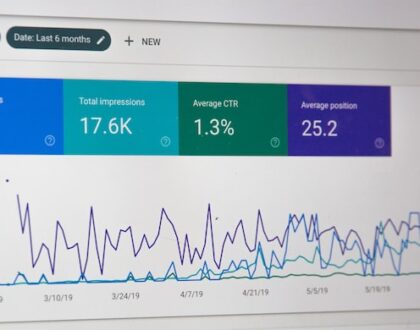How Can Digital Asset Management Help You?
by editor
DAMs are pieces of software that help a company store, organize, and make better use of all of its digital assets. A DAM is the “single source of truth” where marketers can find all versions of media assets that are useful. This includes photos, PDFs, images, audio, video, and even VR or other new forms.
A DAM adds metadata to these files that tell marketers everything they might want to know about the file before they use it, like:
- Does the company have the right to use a picture forever, and if so, in what markets?
- Has the law team given their OK to the most recent version of a video?
- Has an illustration or white paper been checked to make sure it follows the brand’s design guidelines?
What does a business do with DAM?
DAMs are used in many ways by businesses. Marketing firms use DAM technology to help their clients keep all of their material and assets, including those made by them and their partners, consistent.
Companies that sell to other companies might use DAMs in a different way, taking advantage of the benefits of having a central location for marketing materials and sales materials. DAMs are also connected to other technologies, mainly content management systems (CMSs) and digital experience platforms (DXPs), so that material can be sent directly to the channels where it is being consumed. This makes asset management more unified.
DAMs used to be software that was put on a company’s servers before software-as-a-service (SaaS) became popular. But now that most DAMs are cloud-based, their usefulness has grown by a huge amount, especially for global and spread businesses.
Why do so many businesses use DAMs?
What consumers expect:
People who buy things online expect digital experiences to be personalized to their likes and wants. According to Salesforce’s “The State of the Connected Customer” study, 65% of customers expect businesses to know them well enough to change based on their needs and wants. Most people think that personalization will get better as technology gets better, as people give more information, and as people spend more money.
With more and more channels and devices that people use, DAMs make it easier to build and reuse marketing content that fits the needs of each channel and format. They also help with the whole content lifecycle, from original work upstream to delivery downstream. They let you see content that is still being worked on and speed up asset processes, reviews, and approvals. They also work with Adobe Creative Cloud, Canva, and Microsoft Office.
Automation and intelligence
The rising availability of artificial intelligence (AI) and machine learning (ML) is another thing that is pushing people to use DAMs. Even though DAMs are very useful, it has been hard to get people to use them because of how hard it is to manually organize assets by adding titles, tags, and other things that will help users find them later when they need to.
AI content recognition systems that can be accessed through APIs let users automatically study and add information to assets (called metadata) without having to spend a lot of time on it themselves.
AI is also used by DAMs to power advanced search features, such as picture recognition and predictive search. As AI is used to better understand the purpose and context of user queries, these skills are likely to become more useful.
AI is also often used to improve the process automation features in digital asset managers. The technology speeds up the approval and review processes by making them run more smoothly.
What digital asset management tools can do.
Some digital asset management platforms have features that have been around for a long time, like managing files. Others are adding new features thanks to AI and machine learning.
Managing work flow
Different DAM systems have different levels of workflow control tools. Some let you work together by using @tagging, while others offer full-fledged project management tools. This can help marketing teams and outside creative tools talk about changes to an asset while it’s being made or updated.
Later, they can let approvals come from brand managers, executives, and the legal team. Some tools can also make it easier to distribute assets. You might be able to add these features to the main site or get them as an add-on. Some DAMs have made mobile apps, but most are SaaS and can be used in browsers.
How to handle file formats
One thing that sets them apart is their ability to handle different file types. Most of them can play common video, picture, and music formats. If your process needs a specific format, though, you’ll need to make sure that any system you’re thinking about can handle it.
You can convert, change, and customize assets.
Some sites let you upload an asset in one format and then download or share it in another. The format conversions happen automatically. Also, some of them have basic editing tools built right into the app. In order to be clear, links to popular image editing programs like Adobe Photoshop, Adobe Illustrator, and so on are usually more useful.
Management of distribution and user rights
There may be many departments, agencies, freelancers, and other people in the content creation supply chain. Giving flexible permissions is a very useful skill because it makes sure that only the right people can access the right assets.
These features can make it easy for clients and users to take care of themselves within agencies. This also helps big businesses keep their brand message the same in different areas and industries, while still letting marketers and sellers get the materials they need.
Key words and search
One great thing about a DAM is that it lets you find files even after you’ve made them and put them away. Most service providers now use AI to recognize and tag photos and videos, either on their own or through partnerships. AI and machine learning are also being looked at by vendors as ways to gain insights and change material automatically based on how it is used.
Management of digital rights and business governance
Most marketers get their content from stock libraries or individual writers. DAMs can keep track of the exact license terms that apply to each piece of material, making sure that they aren’t used in the wrong market, in an unapproved way, or after the license has expired.
DAM features can usually also be used to keep track of corporate brand guidelines and the dates of different marketing efforts.
Stats and reports
With analytics tools, businesses can see how much money they made by investing in the growth of digital media. They can also find out which images are used most and how, which helps them plan how to make content in the future.
Storage and safety of data
Nearly all DAM providers work with either Amazon Web Services or Google to house their software and the assets of their clients. This means following those businesses’ rules about backups, security, and where data is stored. Some players, on the other hand, give customers a choice of how to store their data. This is helpful for businesses that have to follow strict rules about data control.
Adding things in
A DAM should work well with the rest of your marketing technology (martech) stack because it is meant to be the “single source of truth” for all of your brand’s assets. There are big differences between vendors in how many and what kinds of connections they offer. Some are starting to focus on a certain industry with specific integration needs, like helping online stores that use product information management systems.
Why would you want to use a digital asset management system?
Digital asset management systems can be very important to your marketing company because they can connect your online and offline marketing channels and help you use your marketing resources more effectively.
One of the main perks of using a digital asset management platform is that it can help you with the following:
- Better contact between employees and freelancers or contract workers.
- Better giving of assets to clients, partners, or people from outside the company.
- Better use of the tools that are already there.
- Workflow for internal reviews has become more efficient.
- It is faster to change images into file types, sizes, and aspect ratios.
- It is easier to make assets and send them to martech and adtech platforms.
- It’s easier to follow new brand standards and license terms.
- It’s easier to give customers a more consistent face of the business.
- Being able to watch how much each digital asset is used and, as a result, get a return on the money spent on making and distributing them.
Recommended Posts

Can Attentiveness Actually Drive Campaign Success?
November 8, 2024

Marketers Must Create Time for Time Management
October 25, 2024

Maximizing Revenue Growth Through Sales and Marketing Alignment
October 11, 2024
